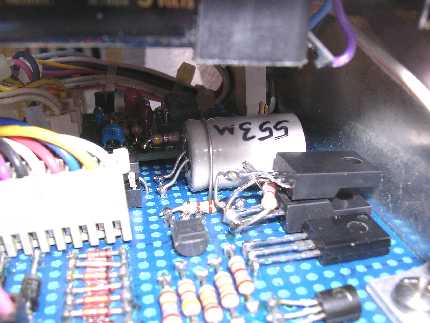

KH6GRT KEYER






Revised 8/2006
This keyer of mine is a re-build of one I had built many years ago. The paddle and case assemblies were kept intact but the old electronics were gutted. The original keyer was build from plans in 73 magazine of September 1965 titled DER KLEINER KEYER by an article by E. L Klein W4UHN/WB2PKE. The original keyer served well for many years but I was now interested in one with a memory or two and battery powered.
I happened across a keyer kit from the Northern California QRP Club that seemed to fit what I was after. The keyer provided 3 programmable 40-character memories, straight key, bug, or iambic modes, 2 beacon modes, variable speed via control pot or software select, and low power consumption suitable for battery operation. I ordered one which included the pc board and parts for less than $20.
Also included in my keyer along with the NorCal keyer board are steering diodes and pushbuttons to select the memories, provisions for both positive and negative polarity keying, a low-power power-on indicator, and an input jack for external straight key or paddle. Two standard 9-volt batteries are used providing both positive and negative voltages to the circuits. The negative battery has a lower current drain than the positive battery and should last thru 3 or 4 positive battery changes. The keyer will work until the batteries reach about 1/2 their rated voltage. The power-on indicator uses a LED flasher chip that blinks the power-on LED about once every two seconds, just enough to catch my attention if I forget to turn the keyer off. The negative keying output provides grid-block type keying capability for up to 400 volts and currents to 1 Amp. The positive keying output provides capability to key relays or cathode currents up to 2-1/2 Amps and 400 volts. All external leads are filtered with ferrite beads.
The latest changes to this keyer (July/Aug, 2006) involved moving the memory switches to the top of the case where they are easier to operate and replacing the output transistor circuitry with MOSFET devices. Changing the output devices to MOSFETs decreased the battery current to about 1/2 the previous amounts while increasing the output current capability considerably. Also, if you don't use the negative keying output, the negative battery doesn't even need to be installed.
 (Use your browser back arrow to return here.)
(Use your browser back arrow to return here.)
END